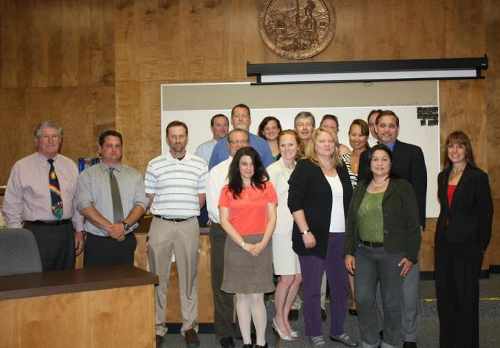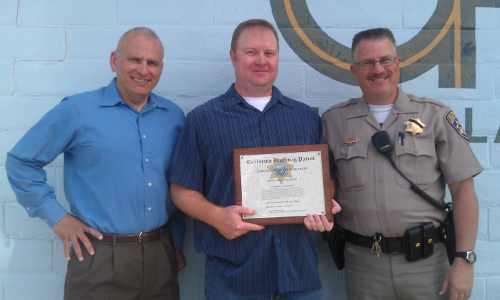- Lake County News reports
More citations and public awareness seen in second Distracted Driving Month campaign
The California Highway Patrol and 265 local law enforcement agencies issued over 57,000 tickets in April to drivers who were using a hand-held cell phone or texting, according to a report from the California Office of Traffic Safety.
The agency said another 3,800 citations were handed out for other distracted driving violations in April. This number is up from the 52,000 tickets issued in April of 2011.
The CHP and OTS praised the cooperation of hundreds of state and local agencies and the reaction of the public to the second annual “It’s Not Worth It!”enforcement and awareness campaign as part of the national Distracted Driving Awareness Month.
“Unfortunately, we’re seeing that the problem of cell phone use for talking and texting while driving is not going away anytime soon,” said OTS Director Christopher J. Murphy. “There are those who understand the dangers and have curtailed their use, while others think the hazards apply to everyone else but them. We can’t stop until we convince everyone that they are putting their own life and others around them at risk with this perilous behavior.”
Use of cells phones and texting while driving is a problem in Lake County, too.
“We do see it here and the officers do take appropriate action when they see it,” said Sgt. Dave Stark of the California Highway Patrol's Clear Lake Office.
Stark said local CHP officers in April wrote 38 citations for violations of Vehicle Code 23123(a), which states, “A person shall not drive a motor vehicle while using a wireless telephone unless that telephone is specifically designed and configured to allow hands-free listening and talking, and is used in that manner while driving.”
Stark said local officers wrote another two citations for violations of Vehicle Code 23123.5(a), which states, “A person shall not drive a motor vehicle while using an electronic wireless communications device to write, send, or read a text-based communication.”
In addition to the enforcement efforts, the OTS continued the “It’s Not Worth It!” public awareness campaign with TV and radio commercials, the Caltrans changeable message signs over highways, DMV messaging in field offices, plus Internet, social media and other outreach.
The “Don’t Be a Distracted Driving Zombie” theme this year emphasized how up to 37 percent of brain functioning needed for driving gets switched to cell phone talking, making the driver severely lacking in ability to safely drive.
Recently OTS released the results of their second statewide cell phone observational survey that showed more than 10 percent of drivers were talking or texting while driving, representing hundreds of thousands of drivers at any given time.
Especially troubling are the cell phone use figures showing drivers 16-25 years of age talking or texting at a rate of 18 percent, up from 9 percent in 2011.
The “It’s Not Worth It!” campaign will continue with both enforcement and public awareness efforts. The State’s Strategic Highway Safety Plan is developing tactics to combat distracted driving, such as formulating plans to increase the data and research available to more accurately understand and combat the problem.
With the lives of hundreds of Californians at stake, the message will continue to be that any phone call or text message can wait until you reach a safe place to stop.
Following a few uncomplicated steps would go a long way in keeping you safe from distracted driving:
- Put your cell phone out of reach when you get in the car so you won’t be tempted to use it.
- Mention on your outgoing voice mail message that you can’t answer because you might be driving.
- Don’t call or text anyone when there is a good chance that they may be driving.
- If you must call or text, pull into a parking space.
- The ability to safely multi-task while driving is myth.
- Never eat, groom, program a GPS, check Facebook, run an app, read or otherwise allow your full attention to leave the task of safely driving.

 How to resolve AdBlock issue?
How to resolve AdBlock issue? 










